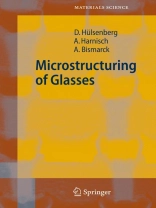As microstructured glass becomes increasingly important for microsystems technology, the main application fields include micro-fluidic systems, micro-analysis systems, sensors, micro-actuators and implants. And, because glass has quite distinct properties from silicon, PMMA and metals, applications exist where only glass devices meet the requirements. The main advantages of glass derive from its amorphous nature, the precondition for its – theoretically – direction-independent geometric structurability. Microstructuring of Glasses deals with the amorphous state, various glass compositions and their properties, the interactions between glasses and the electromagnetic waves used to modify it. Also treated in detail are methods for influencing the geometrical microstructure of glasses by mechanical, chemical, thermal, optical, and electrical treatment, and the methods and equipment required to produce actual microdevices.
Зміст
Fundamentals of Inorganic Nonmetallic Glasses and Glass Processing.- Silicate Glasses: A Class of Amorphous Materials.- Thermodynamic Phenomena in Glass.- Melting and Forming Glass Half Products for Microstructuring.- Geometrical Microstructuring of Glasses and Applications.- to Geometrical Microstructuring.- Mechanical Structuring Processes.- Chemical and Complex Structuring Processes.- Thermal and Thermomechanical Structuring Processes.- Microstructuring Glasses Using Lasers.- Geometrical Photostructuring.- Joining Methods for Glass Based Microdevices.- Properties and Selected Applications of Microstructured Glass Devices.












